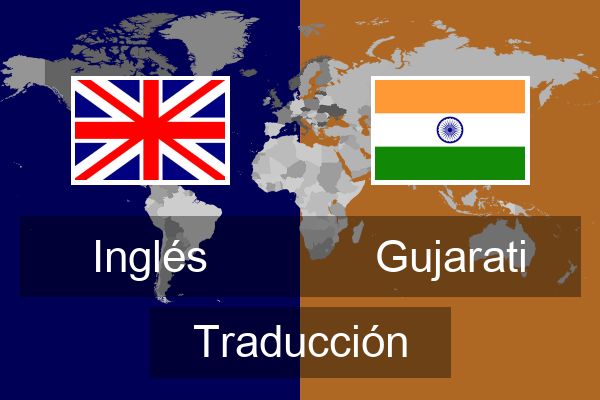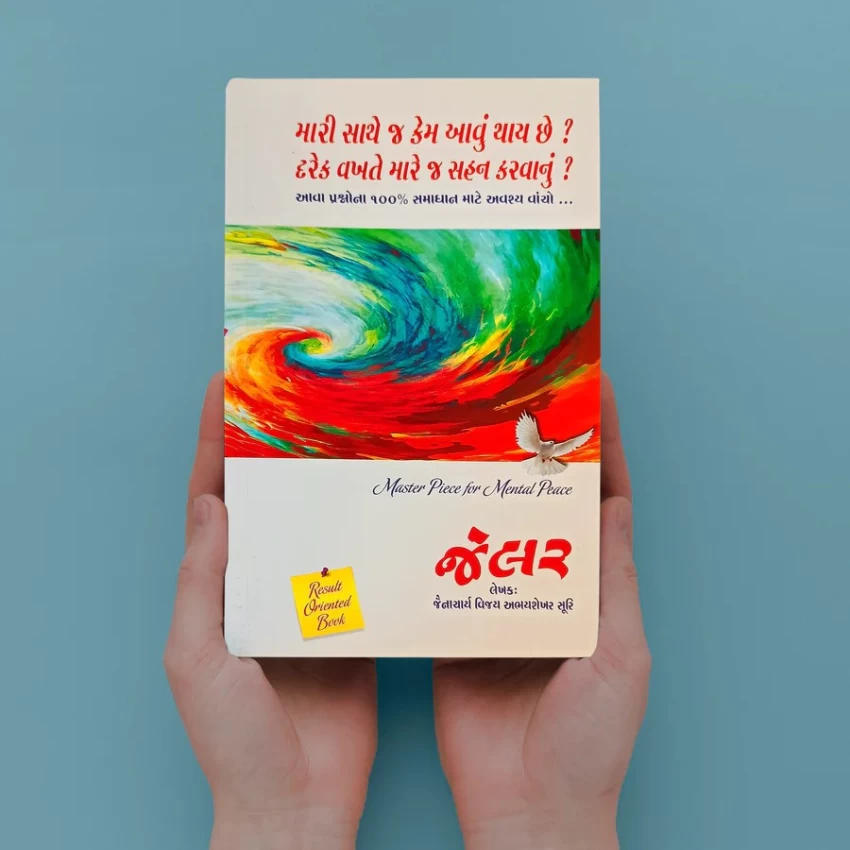Best FREE English to Gujarati translation software

The translation is very important. Our English to Gujarati Translation Tool is powered by Google Translation API. You can start typing on the left-hand text area and then click on the “Translate” button. Our app then translates your English word, phrase, or sentence into Gujarati.
The translation only takes a few seconds and allows up to 500 characters to be translated in one request. Although this translation is not 100% accurate, you can get a basic idea and with few modifications, it can be pretty accurate. This translation software is evolving day by day and Google Engineers are working on it to make Gujarati translation more intelligent and accurate. Hopefully, one day it will produce near to perfect translation!
Gujarati language is widely spoken. More than 46 million people around the world speak this language. For the rest who cannot speak the Gujarati Language, translating Gujarati to English could be quite difficult. Many websites provide services to translate Gujarati for a few dollars. While it is a good idea to pay for translating lots of text (such as books, articles) and for professional service, there is no point paying for commonly used sentences, greeting messages, and other informal use. For these purposes, this tool can be used.
You can copy the translated text and then share them either on social media such as Facebook, Twitter or email it to your friends or family.
If you have any suggestions, and the translated sentence is way too funny then please share with us on our Facebook page. Finally, don’t forget to give us a like and share it on Facebook with your loved one.
Commonly Spoken English to Gujarati Phrases
|
I Love you
હું તને પ્રેમ કરું છુ – (Hum tane prema karum chu)
Welcome
સ્વાગત છે – (Svagata che)
Hello
નમસ્તે – (Namaste)
How are you?
તમે કેમ છો? – (Tame kema cho?)
I’m fine and you?
હું ઠીક છું અને તમે? – (Hum thika chum ane tame?)
What is your name?
તમારું નામ શું છે? – (Tamarum nama sum che?)
My name is …
મારું નામ … – (Marum nama…)
Pleased to meet you
તમને મળીને આનંદ થયો – (Tamane maline ananda thayo)
Thank you
આભાર – (Abhara)
Excuse me / Sorry
માફ કરશો / માફ કરશો – (Mapha karaso / mapha karaso)
|
|
Do you speak English?
તમે અંગ્રેજી બોલો છો? – (Tame angreji bolo cho?)
I don’t speak Gujarati well
હું ગુજરાતી સારી રીતે નથી બોલતો – (Hum gujarati sari rite nathi bolato)
I don’t understand
મને સમજાતું નથી – (Mane samajatum nathi)
Please speak slowly
મેહરબાની કરીને ધીરે થી બોલો – (Meharabani karine dhire thi bolo)
Where are the restrooms?
રેસ્ટરૂમ્સ ક્યાં છે? – (Restarumsa kyam che?)
Can I change money?
શું હું પૈસા બદલી શકું? – (Sum hum paisa badali sakum?)
How much is this?
આ કેટલું છે? – (A ketalum che?)
It’s too expensive!
તે ખૂબ મોંઘું છે! – (Te khuba monghum che!)
Please say it again
કૃપા કરી તેને ફરીથી કહો – (Krpa kari tene pharithi kaho)
Left / Right / Straight
ડાબે / જમણે / સીધા – (Dabe / jamane / sidha)
|
How Does English To Gujarati Text Translation Works?
Our translation service either use Google or Microsoft to translate the text you have typed in english.
Whenever you type a word, sentence or phrase in english – we send API requests to either Google or Microsoft for a translation. In return, they send back a response with a translated text in gujarati.
Their system use machine-language technologies to bring together some cutting edge technologies such as artificial intelligence (deep learning), big data, Web APIs, cloud computing etc to perform higher quality translations.
Can We Download This Translation Service?
No. At a moment you can only use our gujarati translation online.
However, you can install the Chrome extension tool called Google Translate Chrome Extension.
Once this translation tool is installed, you can highlight and right-click section of text and click on “Translate” icon to translate it to the language of your choice. Furthermore, you can translate entire web page by clicking on the “Translate” icon on the browser toolbar.
It support over 100 languages.
What Other Tools Do You Have For Gujarati Typing And Translation?
We have the following tools:
-
- Gujarati Typing Input Tool:With this tool you can type in English and Get in gujarati. For E.g. typing “Tame kema cho?” gives you “તમે કેમ છો?”. Typing gujarati is natural and you don’t need to remember complex gujarati keyboard. Please visit: www.EasyGujaratiTyping.com to use this tool.
This gujarati typing is absolutely free and you can email the text you have typed to anyone – including yourself.
- Gujarati Typing Input Tool:With this tool you can type in English and Get in gujarati. For E.g. typing “Tame kema cho?” gives you “તમે કેમ છો?”. Typing gujarati is natural and you don’t need to remember complex gujarati keyboard. Please visit: www.EasyGujaratiTyping.com to use this tool.
- Gujarati Speech Translator:
Gujarati speech translation service is provided by both Microsoft and Google. They both use their own cognitive services to translate spoken words and phrases into a language of your choice. For some languages, you will hear the translation spoken aloud.Microsoft Translator in particular powers speech translation feature across its products which can be used for Live Presentation, In-Person or Remote Translated Communication (such as Skype), Media Subtitling, Customer support and Business Intelligence.Is This Translation FREE?
Yes. This Eng. to Gujarati text translation is absolutely FREE. You can use our translation tool for both personal and commercial use.
However, we have the following restrictions:
- Per Request Limit: At any time you can translate up to maximum of 500 per request. However, there is no restriction on the number of request you can send.
- Daily Limit : While you can make a number of requests for translation, you won’t be able to translate if we run out of a daily quota.
These restrictions are placed to ensure that robots or automated software are not abusing this facilities.
Can I Translate From Gujarati To English?
Yes. To translate from Gujarati to English visit this link.Why The Translated Text Is Not Accurate?
As explained earlier, the machine-language technology is used to perform the translation. This translation software is evolving every day and as a time goes by the translation is going to be pretty accurate – especially for commonly used phrase and sentences.
At a moment, it is not perfect but our translation software is useful for those who needs help framing the sentence and get general idea on what the sentence or phrase is conveying the message.
Translation is the communication of the meaning of a source-language text by means of an equivalent target-language text. The English language draws a terminological distinction (which does not exist in every language) between translating (a written text) and interpreting (oral or signed communication between users of different languages); under this distinction, translation can begin only after the appearance of writing within a language community.
A translator always risks inadvertently introducing source-language words, grammar, or syntax into the target-language rendering. On the other hand, such “spill-overs” have sometimes imported useful source-language calques and loanwords that have enriched target languages. Translators, including early translators of sacred texts, have helped shape the very languages into which they have translated.
Because of the laboriousness of the translation process, since the 1940s efforts have been made, with varying degrees of success, to automate translation or to mechanically aid the human translator. More recently, the rise of the Internet has fostered a world-wide market for translation services and has facilitated “language localization”
The English word “translation” derives from the Latin word translatio, which comes from trans, “across” + ferre, “to carry” or “to bring” (-latio in turn coming from latus, the past participle of ferre). Thus translatio is “a carrying across” or “a bringing across”—in this case, of a text from one language to another.
Some Slavic languages and the Germanic languages (other than Dutch and Afrikaans) have calqued their words for the concept of “translation” on translatio, substituting their respective Slavic or Germanic root words for the Latin roots.The remaining Slavic languages instead calqued their words for “translation” from an alternative Latin word, trāductiō, itself derived from trādūcō (“to lead across” or “to bring across”)—from trans (“across”) + dūcō, (“to lead” or “to bring”).
The West and East Slavic languages (except for Russian) adopted the translātiō pattern, whereas Russian and the South Slavic languages adopted the trāductiō pattern. The Romance languages, deriving directly from Latin, did not need to calque their equivalent words for “translation”; instead, they simply adapted the second of the two alternative Latin words, trāductiō.

The Ancient Greek term for “translation”, μετάφρασις (metaphrasis, “a speaking across”), has supplied English with “metaphrase” (a “literal”, or “word-for-word”, translation)—as contrasted with “paraphrase” (“a saying in other words”, from παράφρασις, paraphrasis). “Metaphrase” corresponds, in one of the more recent terminologies, to “formal equivalence”; and “paraphrase”, to “dynamic equivalence”.
Strictly speaking, the concept of metaphrase—of “word-for-word translation”—is an imperfect concept, because a given word in a given language often carries more than one meaning; and because a similar given meaning may often be represented in a given language by more than one word. Nevertheless, “metaphrase” and “paraphrase” may be useful as ideal concepts that mark the extremes in the spectrum of possible approaches to translation.
Western theory
Discussions of the theory and practice of translation reach back into antiquity and show remarkable continuities. The ancient Greeks distinguished between metaphrase (literal translation) and paraphrase. This distinction was adopted by English poet and translator John Dryden (1631–1700), who described translation as the judicious blending of these two modes of phrasing when selecting, in the target language, “counterparts,” or equivalents, for the expressions used in the source language:
When [words] appear… literally graceful, it were an injury to the author that they should be changed. But since… what is beautiful in one [language] is often barbarous, nay sometimes nonsense, in another, it would be unreasonable to limit a translator to the narrow compass of his author’s words: ’tis enough if he choose out some expression which does not vitiate the sense.
Dryden cautioned, however, against the license of “imitation”, i.e., of adapted translation: “When a painter copies from the life… he has no privilege to alter features and lineaments…”

This general formulation of the central concept of translation—equivalence—is as adequate as any that has been proposed since Cicero and Horace, who, in 1st-century-BCE Rome, famously and literally cautioned against translating “word for word” (verbum pro verbo).
Despite occasional theoretical diversity, the actual practice of translation has hardly changed since antiquity. Except for some extreme metaphrasers in the early Christian period and the Middle Ages, and adapters in various periods (especially pre-Classical Rome, and the 18th century), translators have generally shown prudent flexibility in seeking equivalents—”literal” where possible, paraphrastic where necessary—for the original meaning and other crucial “values” (e.g., style, verse form, concordance with musical accompaniment or, in films, with speech articulatory movements) as determined from context.
Samuel Johnson In general, translators have sought to preserve the context itself by reproducing the original order of sememes, and hence word order—when necessary, reinterpreting the actual grammatical structure, for example, by shifting from active to passive voice, or vice versa. The grammatical differences between “fixed-word-order” languages (e.g. English, French, German) and “free-word-order” languages (e.g., Greek, Latin, Polish, Russian) have been no impediment in this regard. The particular syntax (sentence-structure) characteristics of a text’s source language are adjusted to the syntactic requirements of the target language.
When a target language has lacked terms that are found in a source language, translators have borrowed those terms, thereby enriching the target language. Thanks in great measure to the exchange of calques and loanwords between languages, and to their importation from other languages, there are few concepts that are “untranslatable” among the modern European languages. A greater problem, however, is translating terms relating to cultural concepts that have no equivalent in the target language. For full comprehension, such situations require the provision of a gloss.
Generally, the greater the contact and exchange that have existed between two languages, or between those languages and a third one, the greater is the ratio of metaphrase to paraphrase that may be used in translating among them. However, due to shifts in ecological niches of words, a common etymology is sometimes misleading as a guide to current meaning in one or the other language. For example, the English actual should not be confused with the cognate French actuel (“present”, “current”), the Polish aktualny (“present”, “current,” “topical”, “timely”, “feasible”),the Swedish aktuell (“topical”, “presently of importance”), the Russian актуальный (“urgent”, “topical”) or the Dutch actueel (“current”).
The translator’s role as a bridge for “carrying across” values between cultures has been discussed at least since Terence, the 2nd-century-BCE Roman adapter of Greek comedies. The translator’s role is, however, by no means a passive, mechanical one, and so has also been compared to that of an artist. The main ground seems to be the concept of parallel creation found in critics such as Cicero. Dryden observed that “Translation is a type of drawing after life…” Comparison of the translator with a musician or actor goes back at least to Samuel Johnson’s remark about Alexander Pope playing Homer on a flageolet, while Homer himself used a bassoon.
